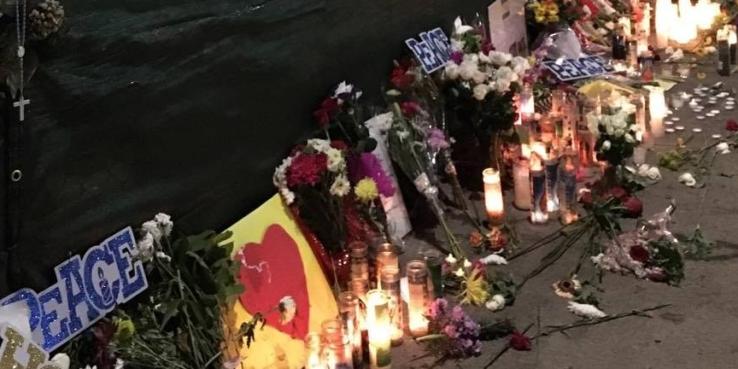By now everyone knows about the fire at the Ghost Ship artists collective in Oakland’s Fruitvale district. It was the most lethal fire in Oakland’s history and the worst in the state since the 1906 San Francisco earthquake and fire. Thirty-six people were killed; the youngest was 17. This tragedy has touched all of us, many of us personally. It is something we never expected to see, and something we hope never to see again. The city’s full report on the tragedy includes information on how to donate to the victims' families.
In addition to the horrible loss of life, this tragedy has hit Oakland hard because it happened in a type of place that, for many, is emblematic of what they love about this city. The Ghost Ship was one of many formerly industrial spaces that have been converted into what some call “warehomes” where writers, musicians, sculptors, painters, clothing and jewelry designers, multi-media creators, photographers and filmmakers live and work. Cities all over the country have been going out of their way to create these sorts of live/work spaces as a way to jump start a post-industrial economy, but in Oakland it happened organically in places like the Ghost Ship because they’re cheap, flexible and available. East and West Oakland are full of them, and they’re among the last places in the Bay Area where counterculture communities can thrive. Part of what makes them cheap is that they haven’t had expensive upgrades to bring them up to code and, as the fire showed, this makes some of them dangerous.
The challenge now facing property owners and the City of Oakland is how to make these places safe without making operation so expensive that they cease to be affordable and cease to function.
For property owners, there are a few simple things that can quickly make their buildings safer. Recently the founder of the Artisan’s Asylum makerspace in Somerville, MA offered some suggestions. They include:
- Mark the exits with appropriate signs that are visible from all parts of the building. They should be internally lit and battery operated.
- Mark the fire lanes, and always keep them clear. They should be at least 36 inches wide, and markings should be on the floor.
- Have enough exits, and keep them clear. If there are going to be more than 49 people in the building at any time, you need at least two exits.
- Make sure the path to the exits is fire-safe. This means wooden ladders cannot be the only access to upper floors.
- Ensure that electrical panels and other building infrastructure, like natural gas and water valves, are clearly visible and accessible.
- Have lots of functioning fire extinguishers and make sure the locations are marked.
- Make sure you have functioning smoke detectors.
- Keep flammable chemicals in appropriate storage containers.
Other cities have grappled with how to make similar properties safe without precipitating mass evictions, and Oakland can learn from them. Perhaps the most famous is New York and its efforts to bring its lofts into fire and health compliance.
In the 1950s, manufacturers moved out of Manhattan in droves, and as the factories and warehouses downtown emptied out, people moved in. The first to move in were artists, and they moved most famously into Soho. Initially, out of concern for their own safety, artists in Soho posted “Artist in Residence” signs on buildings to inform the fire department of where people were living.
Soon speculators saw what was going on and started acquiring the old loft buildings, prompting residents to form the Soho Artists Association — first to work with the city to legalize loft living, which was done in 1971, and then to fight to keep them affordable. This set the precedent for how other cities and neighborhoods could adaptively reuse non-residential urban areas.
This prescribed process is set out by the New York City Loft Law and overseen by the NYC Loft Board. The main job of the loft board is to bring these spaces to the minimum standards of the New York building code for residential occupancy by tracking the progress of landlords in making improvements, mediating and adjudicating renovation-related disputes between landlords and tenants, and prosecuting landlords who violate the loft law.
While New York has successfully brought the lofts into compliance with its building codes, the city hasn’t been so successful at maintaining affordability, and that brings us back to Oakland’s current challenge. In New York, as in Oakland, construction of new residential spaces did not keep up with demand. In the 1960s, 58,000 market rate units were built in Manhattan, but in the1970s as the loft board got to work, production declined to about 20,000. That, plus the appeal of the lofts, drove the affluent into the loft market.
In the days following the Ghost Ship fire, Mayor Schaaf announced a plan to reconvene and expand the Artist Housing and Workspace Task Force, which looked at keeping living and workspaces for artists affordable, and she promised that the arts community would be part of the discussions about how to bring the warehouses into compliance. The task force was part of a larger effort by Mayor Schaaf to address Oakland’s housing affordability crisis — and that remains the larger context in which the Ghost Ship tragedy has become a horrible chapter. Any moves to make such places safer, as necessary as they are, have to keep affordability in mind or the cure might, in many people’s estimation, be worse than the disease.
